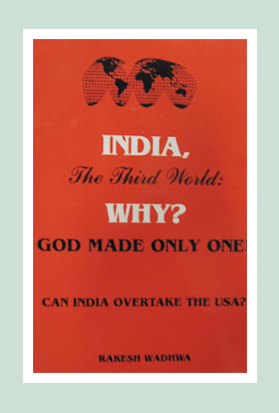History of Casinos and Gambling in Nevada
Did you know that gambling in Las Vegas is intricately linked with the Hoover Dam? July 3, 1930 saw President Hoover signing the bill for the establishment of the Boulder Dam (now known as the Hoover Dam). In 1931, when the construction work began, 5,128 workers were sent to Vegas. Very soon the population surged to 25,000. This rapid rise in the population of males from across the country led to the growth of a market for entertainment. The presence of mafia gang leaders, Mormon financers and people with entrepreneurial dreams fanned the development of the entertainment market.
The Transformation of a Dry Desert into the Gambling Mecca of the World
This market, consisting of showgirl theatres and casinos, catered primarily to dam workers. The Nevada state legislature realized that gaming is a profitable business and in 1931 legalized it. The gambling industry in Vegas, at that point of time, was small but well established. The first license for gambling was given to the Northern Club. Soon, several other casinos, such as the Apache Hotel and the Las Vegas Club, got their license. Since most of these casinos were in the Fremont Street, it became the first street in Vegas to get paved. Vegas also saw its first traffic lights in 1931.
When casinos started mushrooming, nobody would have ever guessed that Vegas could develop into a gambling Mecca of the world as it was quite an inhospitable region. Las Vegas was hot and dry and a few slot machines drew some cowboys and visitors from the military bases to the region. It was definitely not a place that one would visit during vacations. At that time, Las Vegas was recognized only for the illegal activities carried out by Al Capone. Although it was Al Capone who started some of the gambling sites, the construction of the first casino is credited to Mafia Bugsy Siegel and Meyer Lansky.
It was only after World War II (1939 – 1945) that people started looking to Vegas as a possible gambling destination. December 26, 1946 witnessed the opening of the renowned Flamingo. This hotel casino had run into trouble during its early days. However, due to pressure from Mafia groups, it was finally opened in 1946. Las Vegas had not begun receiving tourism interest yet. Therefore, in order to cover the cost of the casino, Bugsy Siegel took funds from the pension amount of unions owned by the Mafia gangs. Flamingo failed to make profits during its initial days. Siegel was murdered and Lansky took over the reins.
Soon after this, casinos were jointly operated by Mormon elders and the Mafias. The Mormon financers facilitated political legitimacy, while the criminals offered unreported income. The crime hotels became well known gambling hubs. Despite the common knowledge that the casino resort owners belonged to dubious backgrounds, 1954 saw more than eight million people visiting Vegas. The casinos made revenue of $200 million that year! At this point of time, the attraction for gambling was doubled by the performance of stars, such as Abbott and Costello, Elvis Presley and Carol Channing, in intimate settings, as well as gourmet buffets.
Gaming in Las Vegas took off within a year. The Flamingo made many times more than its investment. The success of the Flamingo caused an explosion in the number of gambling hubs across Vegas. The dawn of the 1960s saw the rise of the Desert Inn, Fremont, Golden Nugget, Stardust, Hacienda, Riviera and the Stardust. These were some of the earliest casinos in the city. While some of these casinos have been demolished, others, such as the Fremont and the Golden Nugget operate to this day.
Mafia Rule Brought to an End by American Financer
The rule of the mafia gangs in Vegas started coming to an end when noted American financer Howard Hughes began buying out some of the major casinos. An eccentric man, Hughes refused to vacate the room in the Desert Inn, where he put up when he initially visited Vegas. Instead, he purchased the hotel! Hughes established an empire consisting of 17 casinos. He was also able to purchase a lot of real estate in Vegas, hotels, media outlets (connected to organized crimes) through his strong connections.
Once Hughes forced out the Mafias, he became one of the most popular and powerful men in Vegas. In fact, Hughes was credited to have changed the Wild West image of Vegas to a refined cosmopolitan city. He sold his interests after 10 years. The mafias tried moving in after Hughes retired from business; however, these attempts were stalled because, in the 1980s, the FBI cleaned up all the mafia-operated casinos and sold them to legitimate holdings. And, it is these newcomers who are largely responsible for transforming the desert town to the most sought-after holiday destination as it is looked upon today.
The reason why mafia gets into gambling is this: initially gambling is illegal and criminals run it – an example is betting on cricket in India today. Let us say tomorrow sports betting becomes legal in India, as only criminals have the expertise, they would continue to run it. However, in course of time as businessmen acquire the expertise, sports betting would pass from the mafia into the hands of legitimate companies.
India must learn from all of this: let not countries like Nepal, Sri Lanka, Singapore or Macau get an advantage – legitimize gaming in all states.
 Rakesh Wadhwa. Ever since, I was a school boy, I knew India was on the wrong path. Socialism was just not what we needed to get ahead. Government controlled our travel; government controlled our ability to buy and sell; and government controlled our freedom to move our money. My life has focused on the inherent rights people have. When I was in college, I never understood, what the governments meant by their "socialistic attitude". If people are free to buy, sell and move their capital themselves without any restrictions by state, then the welfare of people is inevitable & hence the countries they live in will become wealthy. The government has no right whatsoever, to point a finger at me or my business. I am not a revolutionary. I just want to light up my cigarette and not get nagged about it. I believe in non-interfering attitude to attain more.
Rakesh Wadhwa. Ever since, I was a school boy, I knew India was on the wrong path. Socialism was just not what we needed to get ahead. Government controlled our travel; government controlled our ability to buy and sell; and government controlled our freedom to move our money. My life has focused on the inherent rights people have. When I was in college, I never understood, what the governments meant by their "socialistic attitude". If people are free to buy, sell and move their capital themselves without any restrictions by state, then the welfare of people is inevitable & hence the countries they live in will become wealthy. The government has no right whatsoever, to point a finger at me or my business. I am not a revolutionary. I just want to light up my cigarette and not get nagged about it. I believe in non-interfering attitude to attain more. 
 The Bastiat Award is a journalism award, given annually by the International Policy Network, London. Bastiat Prize entries are judged on intellectual content, the persuasiveness of the language used and the type of publication in which they appear. Rakesh Wadhwa won the 3rd prize (a cash award of $1,000 and a candlestick), in 2006.
The Bastiat Award is a journalism award, given annually by the International Policy Network, London. Bastiat Prize entries are judged on intellectual content, the persuasiveness of the language used and the type of publication in which they appear. Rakesh Wadhwa won the 3rd prize (a cash award of $1,000 and a candlestick), in 2006.
What the readers are saying…